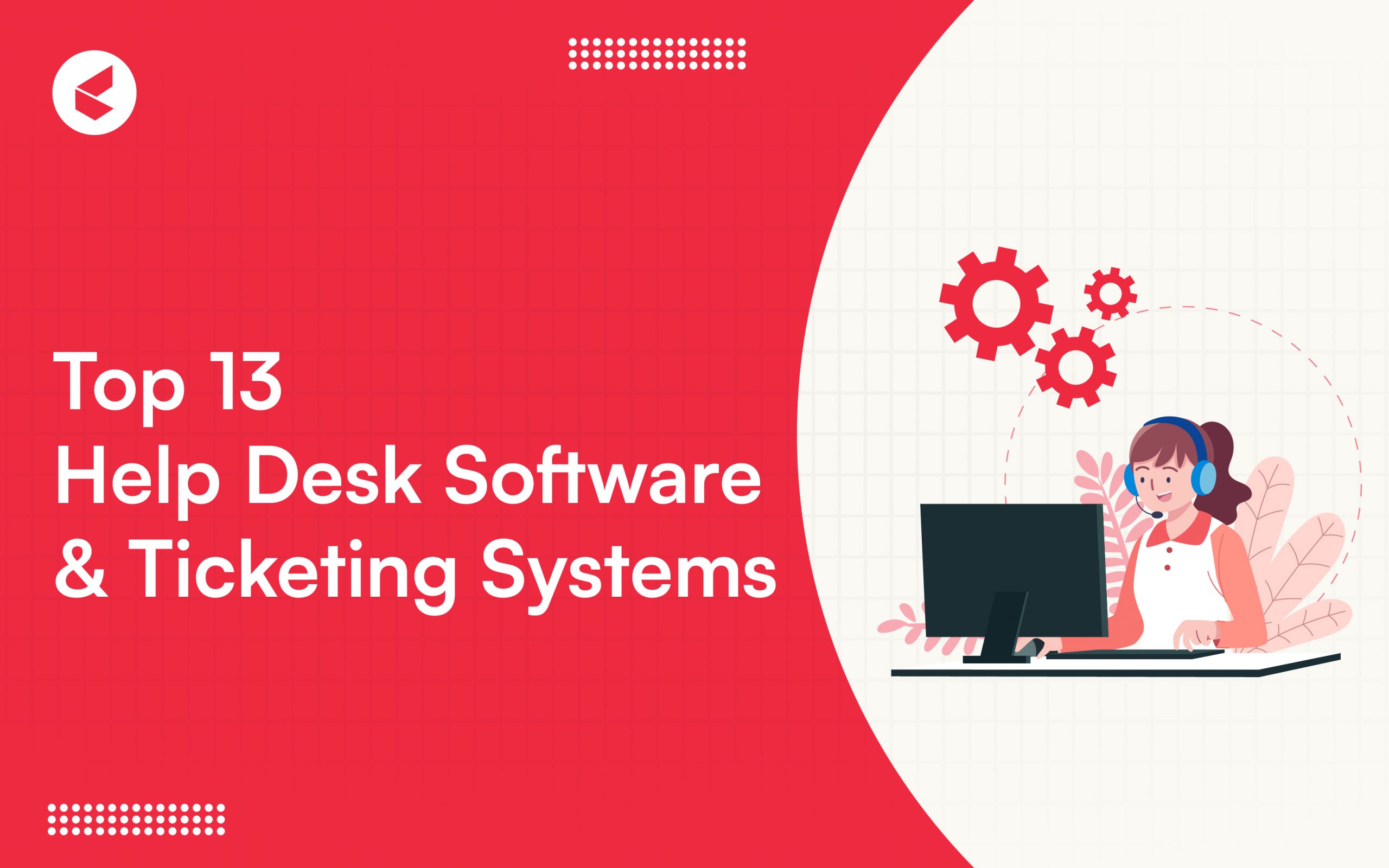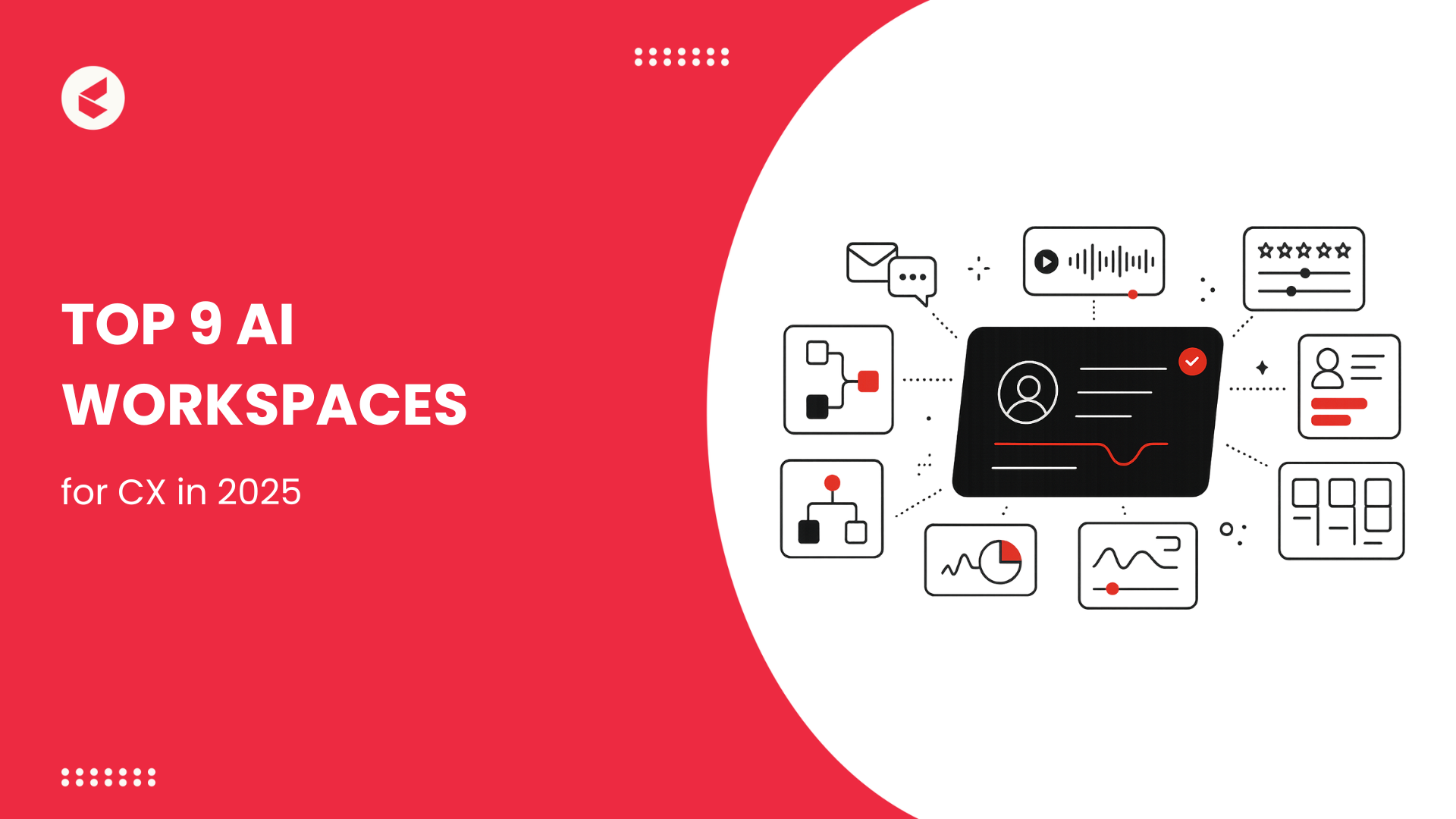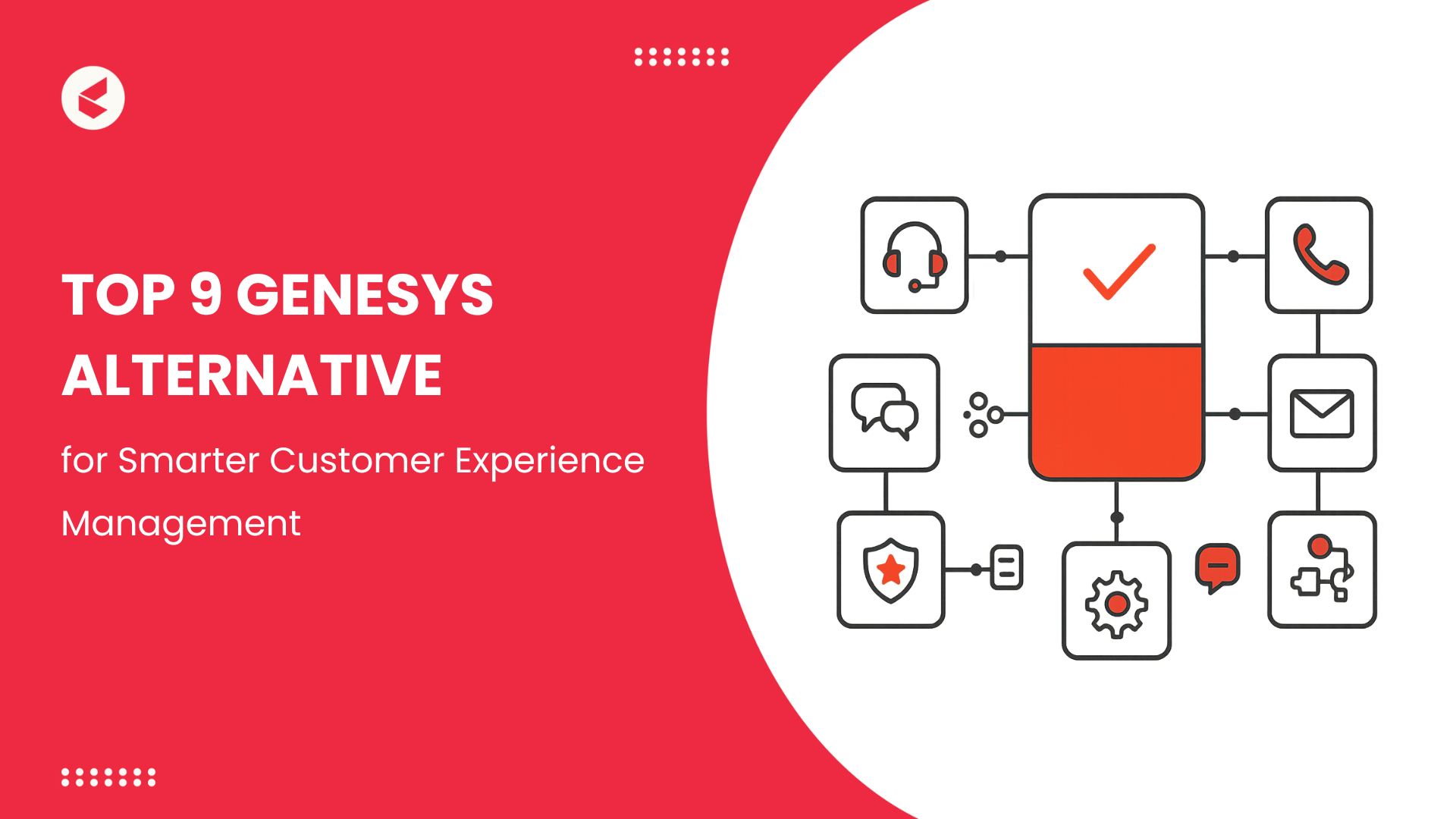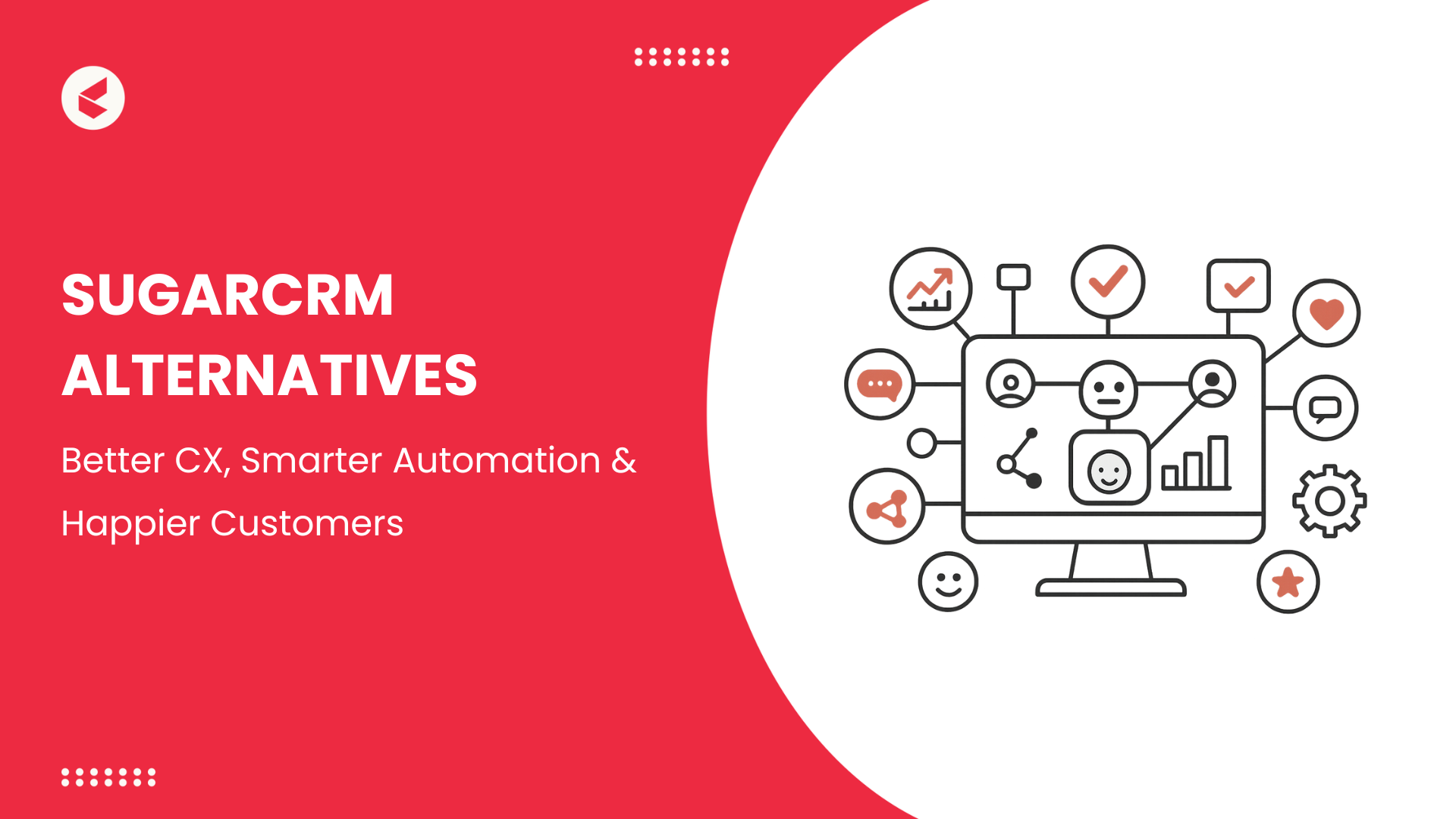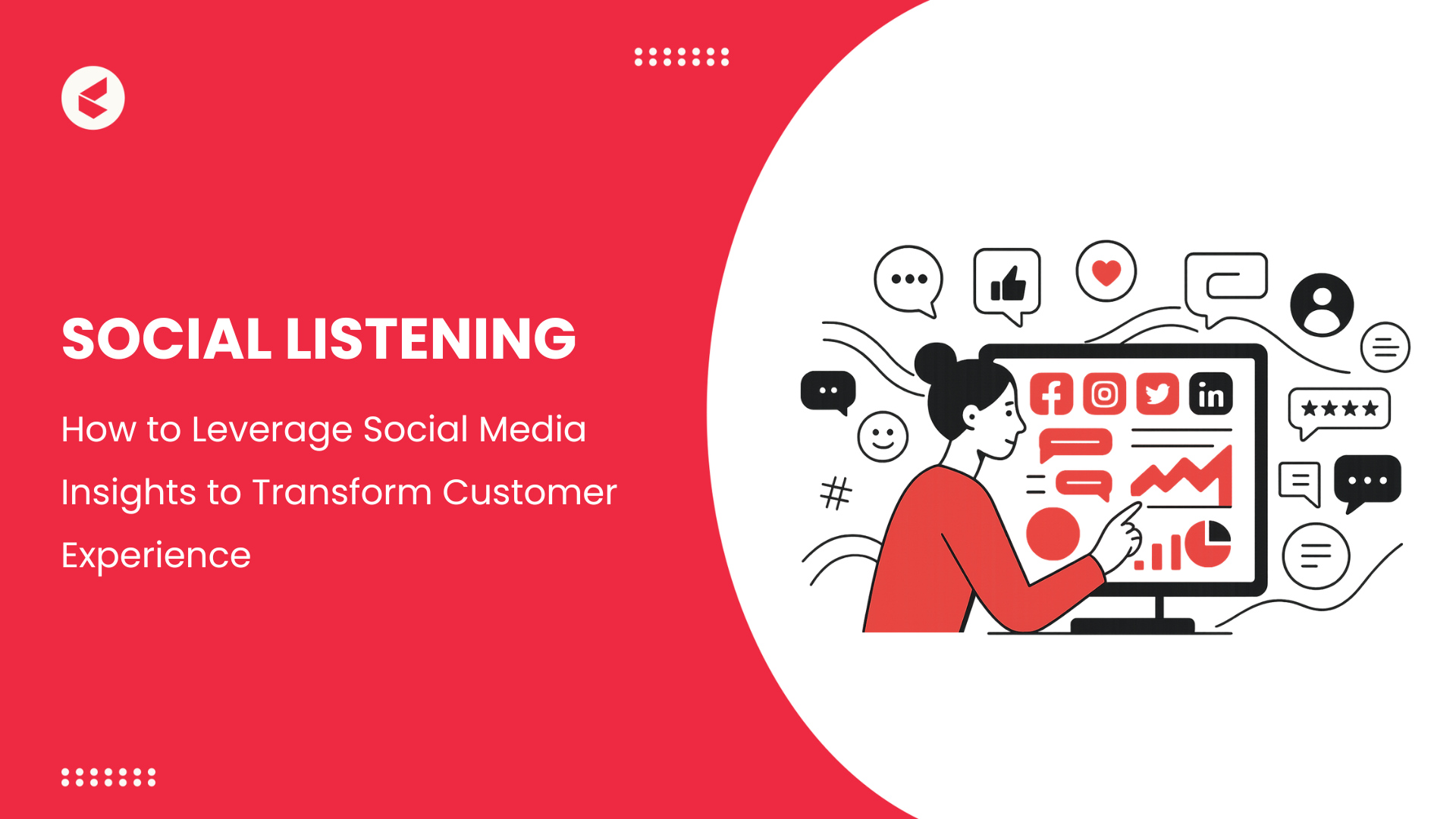“Observe how your users approach information, consider what it means, and design to allow them to achieve what they need.” – Donna Spencer, Writer.
If you have ever been frustrated when contacting a brand about a problem, you will understand Donna’s words clearly. They emphasize the importance of tailoring your help channels according to your customers’ needs.
While the help desk software is vital to enhancing the customer experience with your brand, selecting the right software and configuring it correctly, go a long way.
You need to understand how your customers prefer to contact you and select a help desk solution that caters to this need. Let’s examine the 13 best help desk software available in 2025 to understand which fulfills your customers’ needs.
You will also learn about the importance of help desk ticketing systems and the key roles of the employees who use them.
Help Desk Software: An Overview
Help desk software routes incoming customer service requests to relevant team members. Service teams use this software to manage customer communications, follow-ups, and grievances using a centralized dashboard.
Help desks simplify the service team’s jobs by automating ticket routing and tracking, labeling service requests, categorizing and organizing them, and much more. These features help the agents keep track of service requests granularly without losing their productivity in repetitive clerical tasks.
It also empowers end-to-end follow-through of a service request, ensuring that the grievance is resolved before it can escalate.
A FinancesOnline report highlights that 82% of customers prefer to contact a company via voice call, followed by email (62%) and live chat (43%). Help desk software equips service agents with unified conversation threads, automated responses, and self-service chatbots that help them manage incoming requests from all these channels in a single view.
It assists service representatives in efficiently handling a high volume of incoming requests without compromising brand service standards.
The same report also reveals that 33% of customers identify good service with first-call resolution.
Help desk ticketing systems assist customer service teams with several management aspects, such as automating responses, setting up self-service portals, and tracking follow-ups. This helps customer service agents enhance query resolution efficiency and deliver more value with each interaction.
In 2025, held desk software is evolving and incorporating innovative features (like AI-powered analytics) to power strategic service decisions (such as upscaling manpower or improving first-contact resolution) that enhance customer service quality.
Understanding Help Desk and its Role in Business
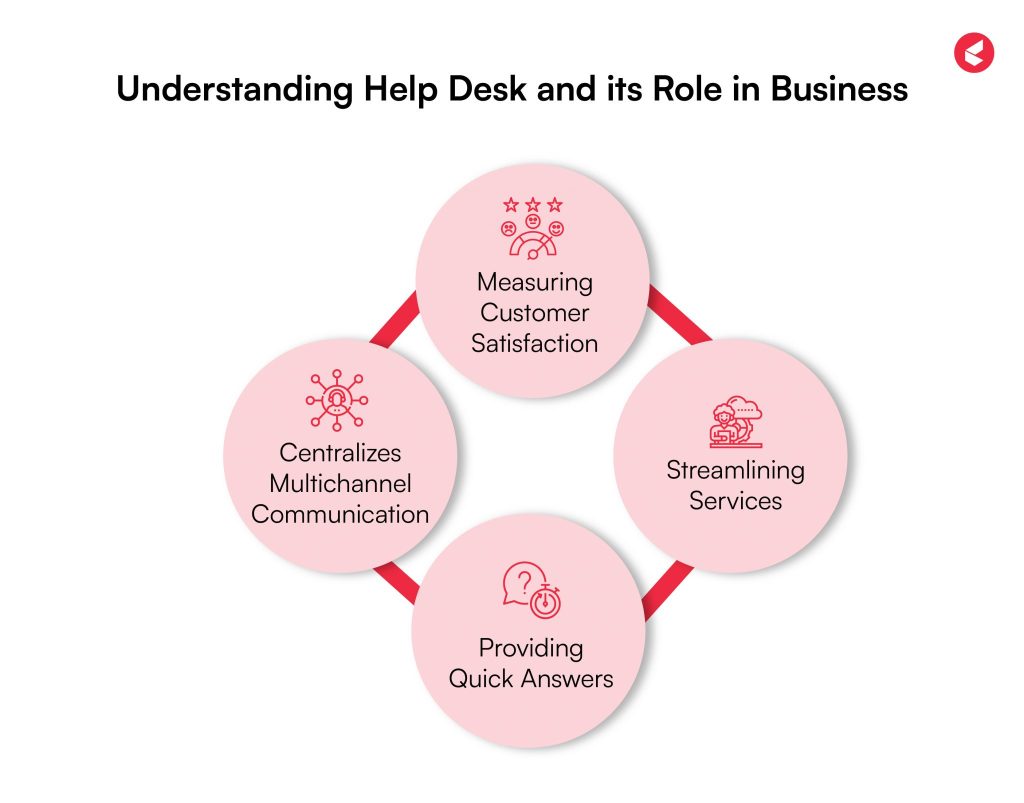
A help desk software is the initial touchpoint for customers seeking solutions or answers to a problem with a service or product. It performs four essential functions, including:
1. Centralizes Multichannel Communication
Help desk software allows customers to reach a business through multiple channels, such as calls, messaging, emails, social media, etc. In the backend, all this communication is centralized on the service agents’ consoles to help them get a consolidated view of each customer’s queries, no matter where they originated or which channel they were continued on.
2. Answering questions
Help desks equip your company with FAQs, self-service options, and other service choices that customers can easily navigate to get answers. This expedites the process of resolving queries and reduces the customer waiting time.
3. Streamlining service
Help desks establish a central repository for resources and information to solve customer issues quickly. They also help with workflow guidance and automation to assist agents in providing better customer service.
4. Measuring customer satisfaction
Help desks also serve as feedback centers for customers. They can leave comments and ratings on portals that help the brand measure customer satisfaction directly, with firsthand information from their customers.
A well-functioning help desk employs specific roles within the customer service team for smooth execution:
1. Help Desk Manager
The help desk manager executes the system’s daily operations as efficiently as possible. Their role involves hiring agents, monitoring their training, and providing proper structure to support processes. They also track the company’s KPIs according to the set service goals.
The help desk manager also deals with the budget and reports to their executives regarding the team’s performance.
2. Help Desk Representative/Agent
A help desk agent is a live agent who directly handles incoming service requests. They are responsible for handling requests across all the company’s channels, such as email, chat, social media, call, portal, etc.
Help desk agents can also contribute to updating the company’s knowledge base and enriching it with innovative solutions to common customer problems. If the team size is large, these agents may work in a hierarchy and be responsible for coaching and mentoring their juniors.
3. Help Desk Team Leader
For the larger teams, the help desk team leader assists the manager in running operations by coaching new agents and motivating everyone to deliver great customer service. The team leaders are also responsible for monitoring whether agent performance is governed by Service Level Agreements (SLAs).
How Does a Help Desk Ticketing System Work?
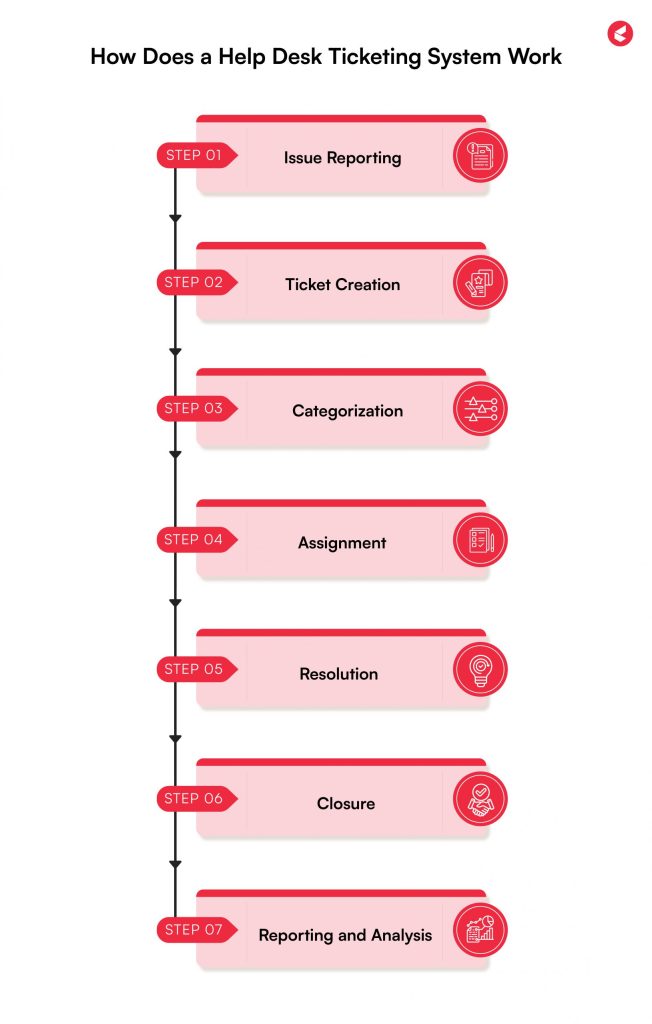
The help desk ticketing system workflow is initiated when a customer accesses the first help point on a company’s channel. From that point, the help desk software works in the following manner:
Step 1: Issue Reporting
A customer accesses one or more of the company’s help channels, such as email, phone, chat, self-service, etc., to report the issue they are facing. This is labeled as the initial contact made by customers, highlighting the need for assistance.
Step 2: Ticket Creation
When a customer reports an issue, the help desk software creates a ticket. This ticket usually contains details about the customer and the issue, such as contact information, the nature of the problem, relevant images or attachments, and the like.
Step 3: Categorization
The help desk software then categorizes the ticket based on the type of issue, its severity, and urgency. This step is essential to routing the ticket to the right agent and easing the workflow for quicker resolution. It also enables the service teams to prioritize and solve critical issues immediately.
Step 4: Assignment
The help desk software then assigns the ticket to the most relevant and capable agent for resolution. For example, technical tickets would be assigned to agents who understand how a product works. In contrast, general tickets (such as login assistance or password changes) would be transferred to non-technical agents.
Step 5: Resolution
Some issues may require human intervention. Such tickets get auto-assigned to relevant agents who work earnestly to resolve them. This step involves troubleshooting, discussions, acquiring additional information from the knowledge base, or escalation.
Step 6: Closure
Once the issue is resolved, the help desk software labels the ticket as closed. It archives the ticket with the correct tags and labels so that agents can refer to it for future assistance and service enrichment.
Step 7: Reporting and Analysis
The help desk ticketing system logs the information and metrics from this ticket into its analytics engine to produce insights on average resolution time, CSAT score, etc.
Key Features of Help Desk Software
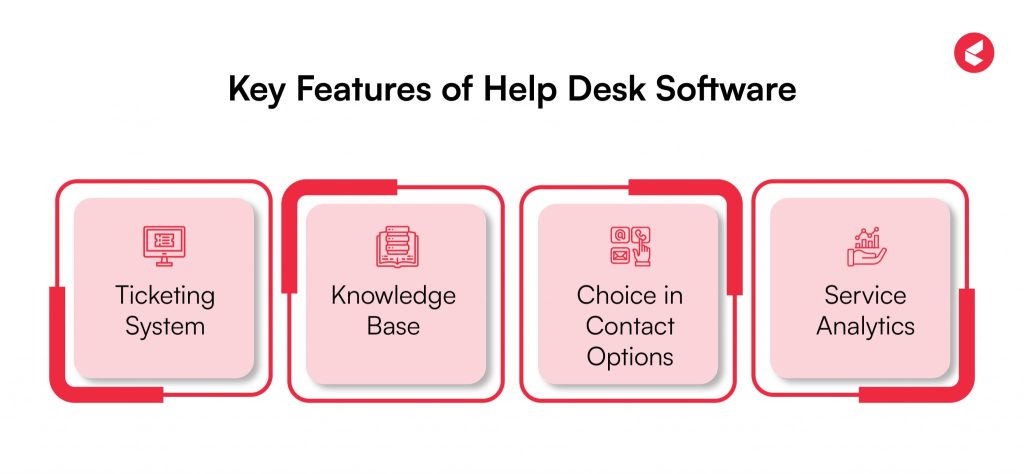
Help desk ticketing software has many more features than just creating and assigning tickets. Let’s take a look at the four most useful features of this software:
1. Ticketing System
Ticket management is a complex process, especially when handled on a larger scale. There are four key processes that a help desk software handles concerning tickets:
- Management: Using this feature, agents can receive tickets, assign them to other agents, and track ticket progress as they pass through various service phases. They can also escalate tickets if necessary.
- Automation: Agents can configure help desk software to automate ticketing workflows by determining the automation engine’s triggers, rules, and management protocols. They can also use this feature to assign tickets, set up notifications, forward tickets, and more.
- Escalation: Escalation is required when the initial customer representative does not have the resources to resolve an issue and must forward it to a senior agent. Help desks automate ticket escalation to the most relevant department to ensure resolution in the fewest steps possible.
- Distribution: Also known as routing, ticket distribution forms the core of help desk processes. Help desk software uses this feature to effectively distribute incoming tickets to the right agents, maximizing first-call resolutions and enhancing customer service metrics.
2. Knowledge Center
A knowledge base is one of the primary features of any good help desk software. Knowledge bases are information repositories that contain answers to frequently asked questions, how-to guides, company information, video-based demos, departmental information, and agent-generated content that customers can access anytime.
3. Choice in Contact Options
Another key feature of good help desk software is multiple contact options. Customers like to choose how they want to connect with you. The help desk provides them with various ways to contact your representatives, such as live chat, instant messaging, email, phone numbers, etc.
4. Service Analytics
Customer support analytics are necessary today to gauge service performance from customers’ perspectives. Thus, help desks feature dashboards reflecting KPIs, customer feedback, and ratings to help you clearly understand the overall service picture.
Why Your Company Needs Help Desk Software?
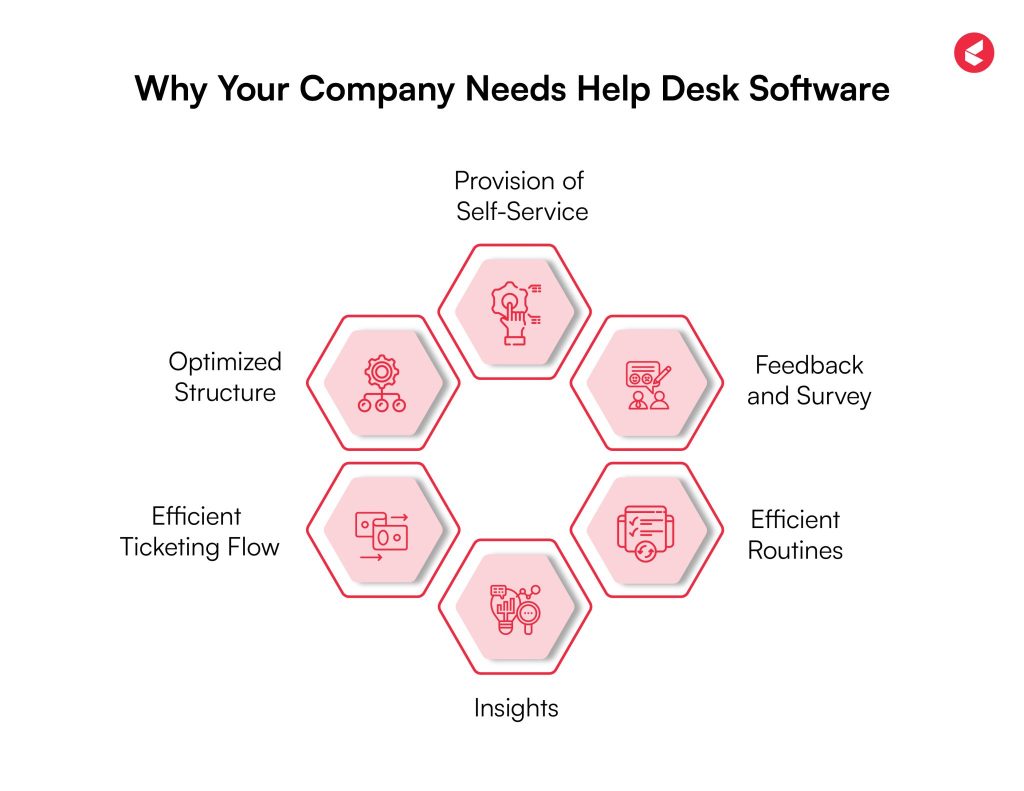
Help desk ticketing software empowers your company to improve visibility into service processes. There are several benefits of implementing help desk software:
1. Optimized Structure
Help desks bring structure to your service processes. They help you set up service tiers where the first tier caters to self-service, the second to primary agents, the third to escalation requests, and so on.
Help desks streamline the flow of your tickets and help you deflect basic queries by efficiently utilizing self-service options.
2. Efficient Ticketing Flow
Most service centers work by directing the flow of tickets based on priority tags. Help desks go further and leverage AI-powered automation to route and queue tickets intelligently for the fastest resolution times.
They also help reduce the turnaround time and the length of queued tickets. To deal with tickets more efficiently, you can program help desks to use round-robin or load-balancing methods.
3. Provision of Self Service
Self-service is one of the most important aspects that help desks facilitate. A ThinkHDI report states you can save $2.37 for every self-help ticket.
Use help desks to set up self-service portals, knowledge bases, FAQs, chatbots, etc., and give customers a way to help themselves at the first touchpoint. This would deflect countless queries that would otherwise engage your agents with basic questions.
4. Feedback and Survey
Help desks are excellent tools for setting up user surveys and feedback forms. You can automate help desks to send feedback forms to customers after their call with your agents ends.
This enables you to gather feedback on the service quality and time to use for improvement and enhancing service levels. You can also configure the help desk to roll out periodic surveys automatically to ensure you are on the right track.
5. Efficient Routines
Using help desk software, you can schedule, monitor, and automate routine service tasks such as sending thank-you emails, initiating a feedback call, etc. It enhances your agents’ productivity by eliminating clerical tasks from their to-do lists, enabling them to focus better on servicing other customers.
6. Insights
The chief benefit of using help desk software is gaining insights into your service team’s performance. The dashboards help you see how productive and effective your teams have been, your center’s average resolution time, CSAT (Customer Satisfaction) scores, average handling time, and other metrics that define service quality and efficiency.
How to Choose the Right Help Desk Software for Your Organization?
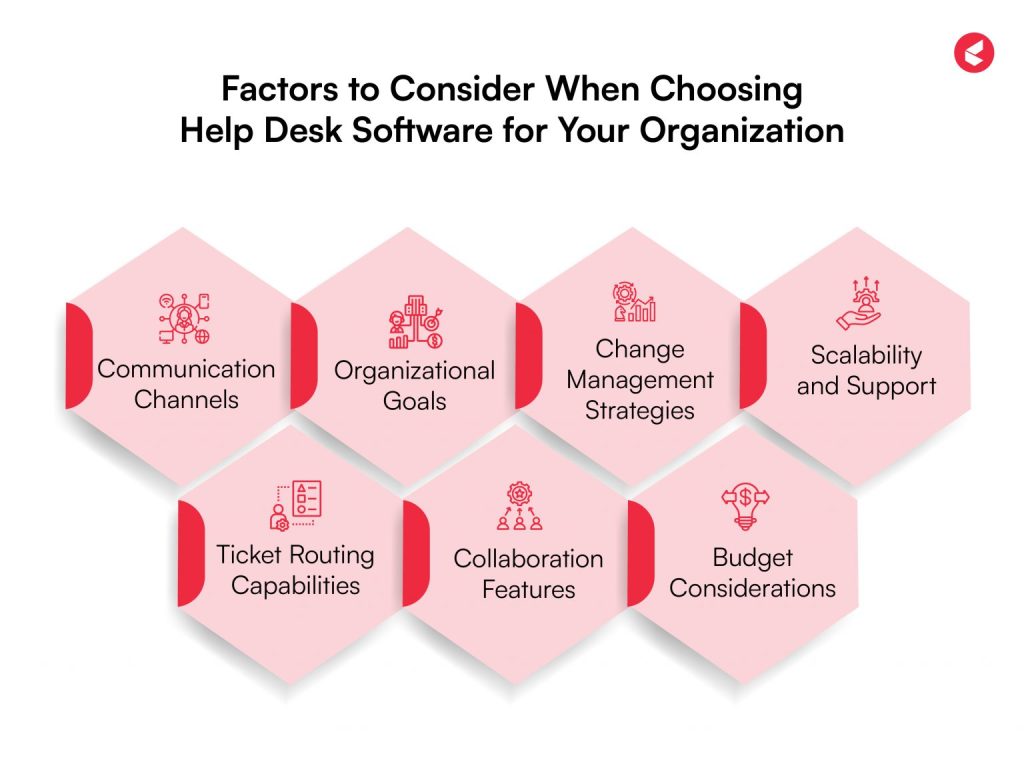
If you are overwhelmed by the various features and advancements in help desk software, consider a few key aspects to guide your selection.
Make sure that your shortlisting process does not ignore the following critical aspects:
1. Channels
The help desk software you choose should support all the business channels you use to stay in touch with your customers. This includes apps, email, chat, instant messaging, social media, etc.
Before shortlisting your products, check the software for channel integrations and added value (like omnichannel or cross-channel support) to sweeten the deal.
2. Goals
Every help desk software has its specialty and shortcomings. Examine each candidate thoroughly to ensure their specialty aligns with your service team’s goals and objectives.
For example, if your primary aim is to set up self-service, you should prioritize software with automation and chatbot features.
3. Change Management
It is important to consider how much change the new implementation will bring to the workflows and processes. You would need to manage the change by arranging prior training and learning sessions to help your team ease into the new interface. Easing the learning curve and time helps them retain their productivity even with the new technology.
4. Scale and Support
What scale is your customer service department operating at? To ensure the solution is fit for the long term, it is important to align the software’s scaling capabilities with your future expansion plans.
Moreover, assess how many tiers of help desk the software can provide—it helps to better structure your processes.
5. Routing
What kind of routing matrix do you want your ticketing to follow?
Different help desk software provides different routing settings; be sure to shortlist the one that allows you to seamlessly customize this aspect of your workflow.
For example, the software should allow routing based on department, seniority, prioritization, etc., depending on your needs.
6. Collaboration
If your service teams collaborate to handle complex tickets, it is important to check the shortlisted software for collaboration tools.
Check if the software allows multiple agents or teams to work on a single ticket or if team members can collaborate in real-time to resolve a query.
7. Budget
Most subscription-based software requires higher budgets for larger teams and greater ticket volumes. Internal stakeholders must discuss this aspect to arrive at a mutual decision based on a cost-benefit analysis.
Top 13 Help Desk Software Tools
Let’s now examine the 13 best help desk software on the market today, ranked by key features and utility.
1. Kapture CX
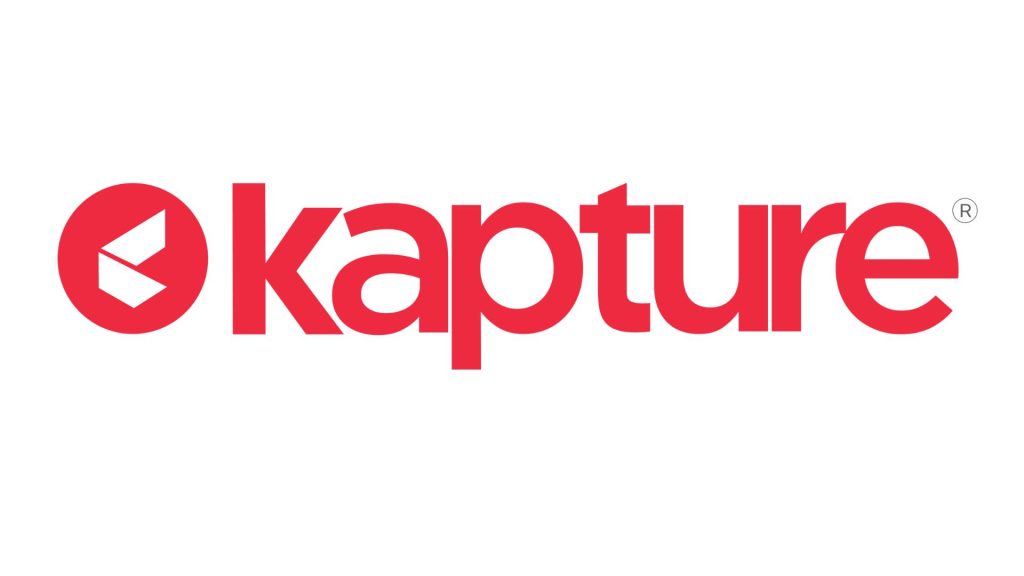
Kapture CX is more than just a help desk—it is a full-fledged customer experience platform. It is best suited for businesses that wish to deliver a hyper-personalized customer experience at each touchpoint.
Key Features
- Industry-Specific Platforms: Built-in, industry-specific customizations solve niche challenges such as compliance (BFSI), high-volume inquiries (Travel), logistics queries (Retail), etc.
- Unified Platform: Integrate your customer-centric operations on a single platform to elevate crucial KPIs such as response time and customer satisfaction score and enhance contact center efficiencies.
- Customers: Provide AI-powered self-service, gather feedback at each touchpoint, and deliver seamless omnichannel experiences to reinforce customer experience with meaningful, value-added interactions.
- Agents: Power your agents with intelligent Agent Assist and 360-degree customer views, unified conversation threads, AI-summarized conversation insights, and quick prompts to deliver service above and beyond standard.
Kapture CX offers flexibility and commitment in crafting tailored CX solutions for clients, helping them maximize returns and elevate their service game. We are happy to customize a bespoke plan for your enterprise. Get in touch with Kapture today.
2. Zendesk
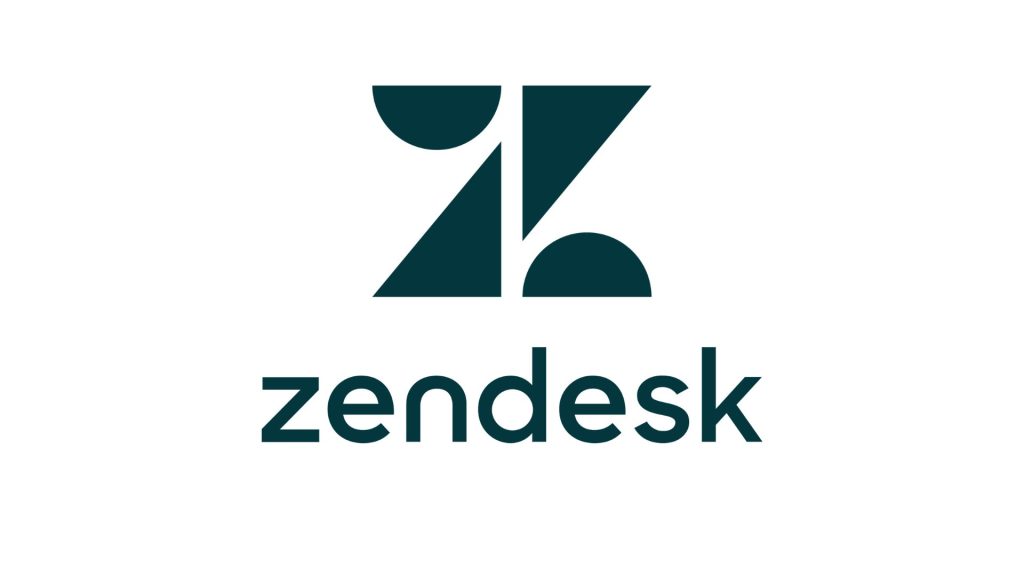
Zendesk is an AI-first customer service tool best suited for enterprises looking to automate over 80% of their help desk processes. Its AI has been trained specifically for customer service.
Key Features
- Messaging: Leverage Zendesk’s complete messaging solutions to initiate engaging web, mobile, and business interactions. Use bots to power 24×7 support.
- AI and Automation: Use AI agents to resolve interactions and reduce agent load. Automate processes across all your conversation channels.
- Agent workspace: Allow agents to unify their channels in the workspace for better context and easier collaboration.
- Help center: Provide customers and agents with a smart knowledge base for quick access to information.
3. Zoho Desk
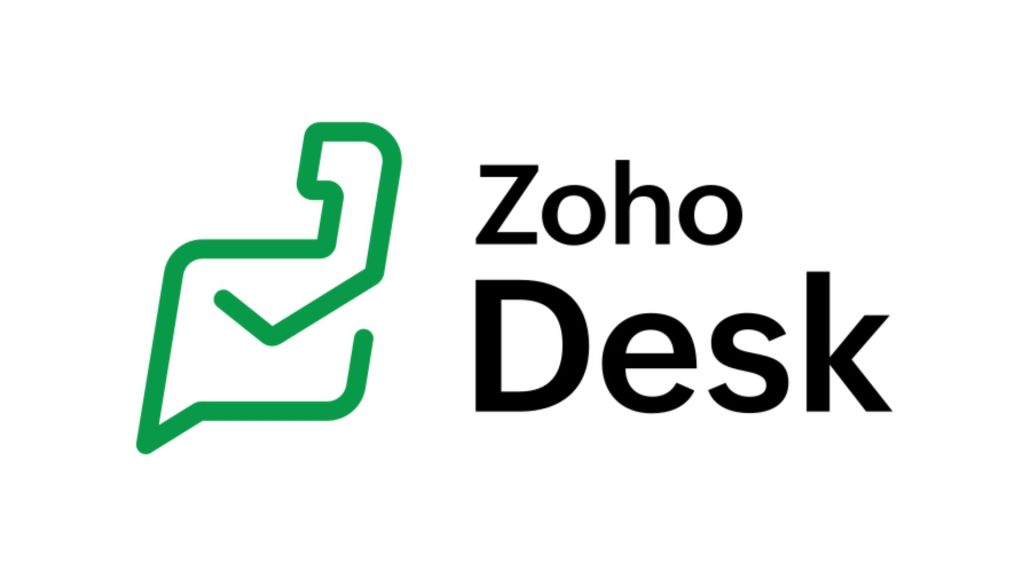
Zoho Desk is ideal for businesses that seek to speed up issue resolution and boost customer retention. It provides solutions for businesses of all sizes.
Key Features
- Customers: Provide omnichannel experiences, self-service modules, and AI-guided conversations for enhanced customer service.
- Agents: Empower your agents with contextual support and advanced reply editing features for more personalized responses. Leverage various work modes and collision detection for better efficiency and productivity.
- Businesses: Integrate the built-in analytics through dashboards and reports to measure service impact—track team performance easily with up-to-date data. Gain more leads with predictive intelligence features.
4. Groove
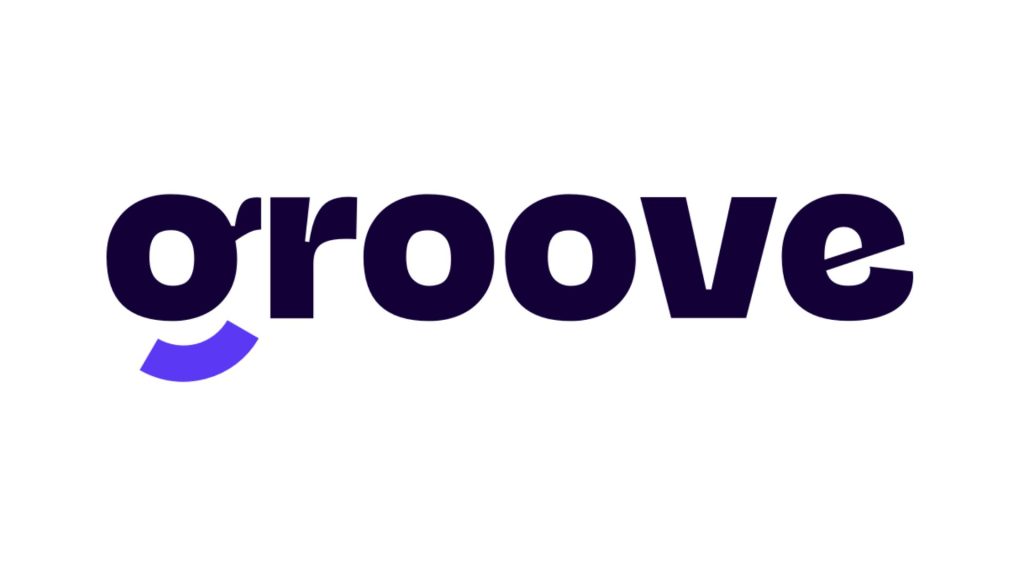
Groove is an innovative help desk solution that allows you to manage service requests using a shared inbox-like interface. It is especially suitable for small to medium-sized businesses.
Key Features
- Team inbox: Utilize the shared inbox to assign conversations and boost ticket ownership. Use @mentions and notifications to keep the team in the loop.
- Knowledge base: Facilitate 24×7 support with a robust knowledge base, full team access, and total brand control. Embed knowledge bases across your channels using widgets.
- Live chat: Power your distribution using round-robin assignments and provide real-time support. Never leave a chat unattended using Unattended Message logic.
- Reporting: Gather performance metrics, conversation, and satisfaction insights to gauge customer sentiments.
5. Hiver
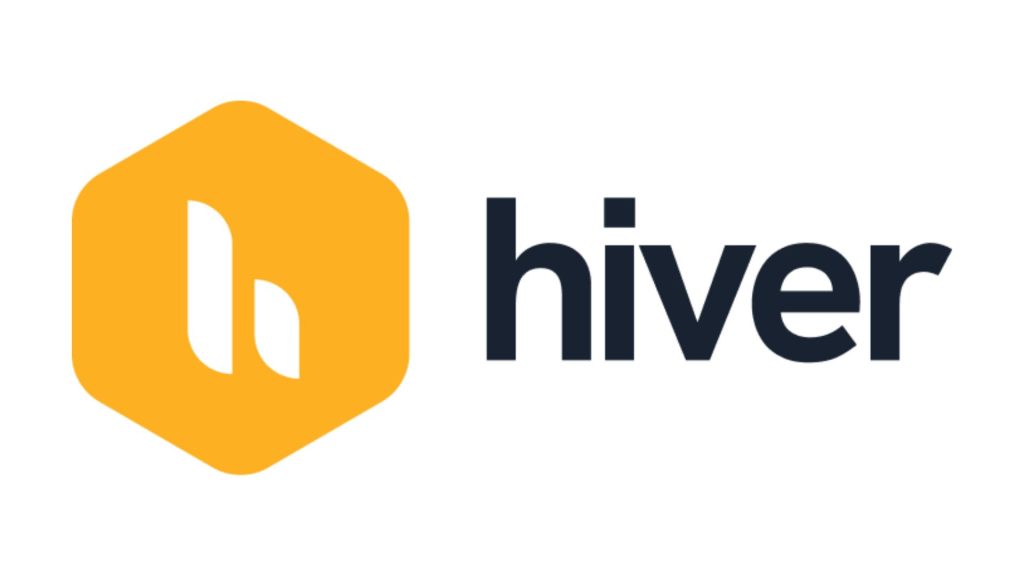
Hiver is a help desk with an inbox-like interface. It allows you to manage all your support channels from your inbox. The software is simple, fluid, and intuitive and does not require a long learning curve.
Key Features
- Collaboration: Use a single thread to fast-track responses and enrich them with full context. Eliminate duplication and collisions with escalation and approval workflows.
- Automation: To select team members, use email auto-assignments and conditional triggers. Use skill-based and round-robin assignments for efficient workload management.
- AI: Assign AI to deliver personalized customer support and uphold SLA standards.
- Analytics: Track and analyze your customer conversations with tailored reports and analytics, dynamic dashboards, real-time insights, and more.
6. Freshdesk by Freshworks
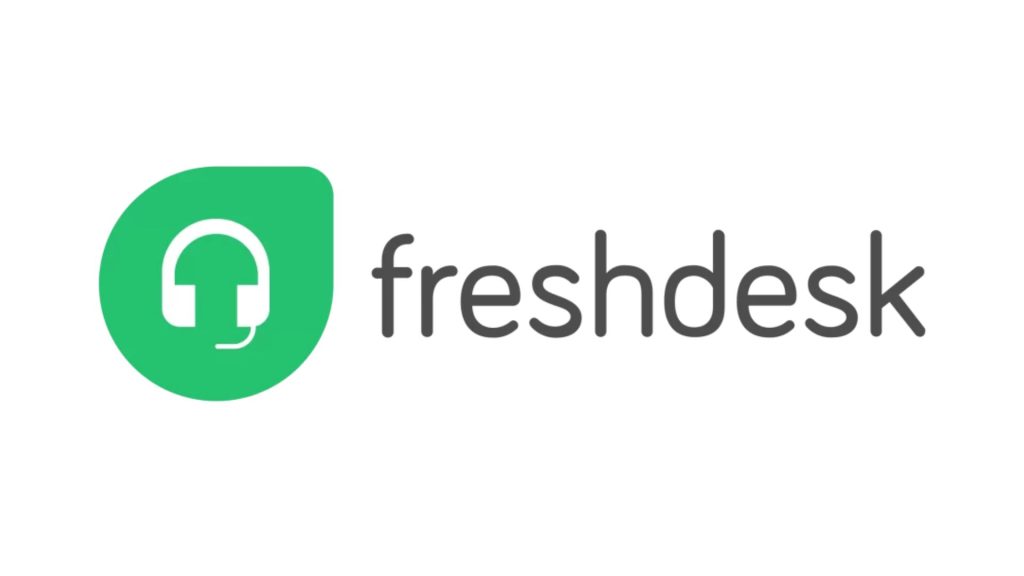
Freshdesk by Freshworks is the ideal help desk for businesses that want quicker processes and efficient backend management.
Key Features
- Unified Workspace: Consolidate aspects like customer history, ticketing, teams, and more in a single view to help agents stay focused and eliminate tool switching.
- Advanced Ticket Management: Use AI-powered ticketing to help your agents respond to queries faster. The ticketing system is easy to use and automated for quicker processes.
- Streamlined Administration: Leverage the power of AI and automation to self-propel the administrative tasks and free up agent time so they can focus on customer service.
7. Help Scout
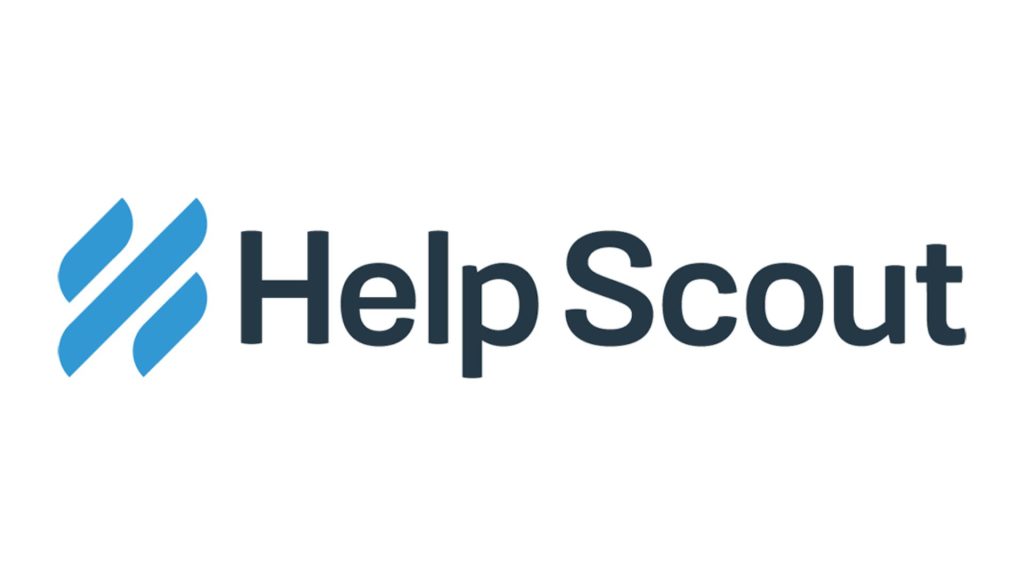
Help Scout is a simple, AI-first help center tool that allows you to work with shared inboxes and set up live chat. It best suits businesses that want a simple, straightforward help desk solution.
Key Features
- Inbox: Leverage a single inbox to bring conversations from all channels, including all your teams, together and work faster.
- Self-Service: Set up 24×7 support channels to reduce team workloads by up to 30%. Build your help center and set up automated answers for good self-service.
- Proactive Messaging: Leverage proactive messaging to help customers move in your service pipelines.
8. Front
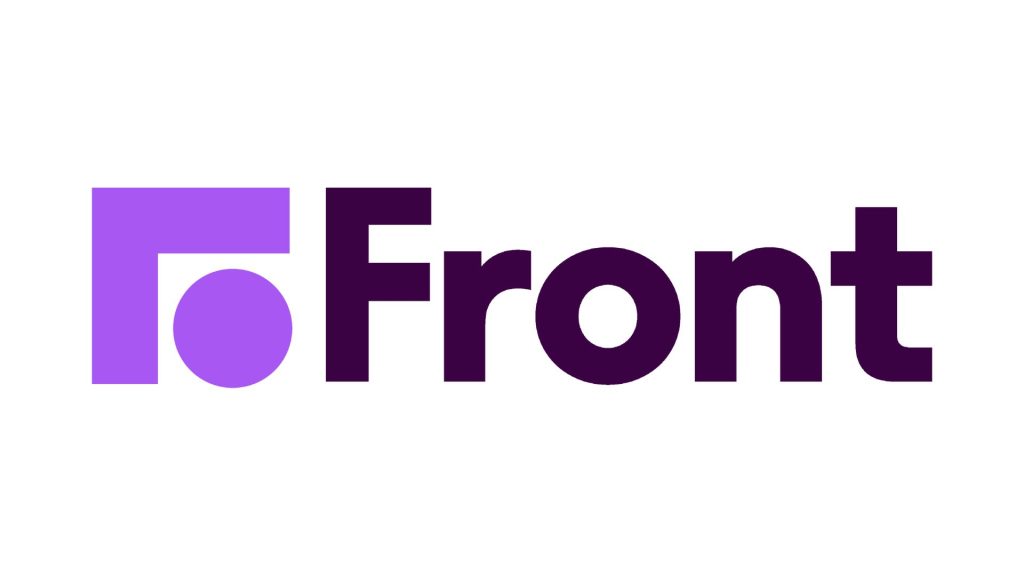
The front help desk focuses on handling customer conversations. It is best suited for businesses that want to consolidate their customer interactions from various channels more efficiently.
Key Features
- Omnichannel: Centralize all your customer conversations across all channels on one platform. Gain the conversation history in a single place to provide contextual service.
- Ticketing: Easily track and organize tickets using statuses, custom categorization, and automation. Gather key insights using inbuilt analytics to gauge customer satisfaction.
- Live Chat: Implement AI-powered live chat to fast-track customer responses and reduce waiting time. Provide personalized responses using AI.
9. UVdesk
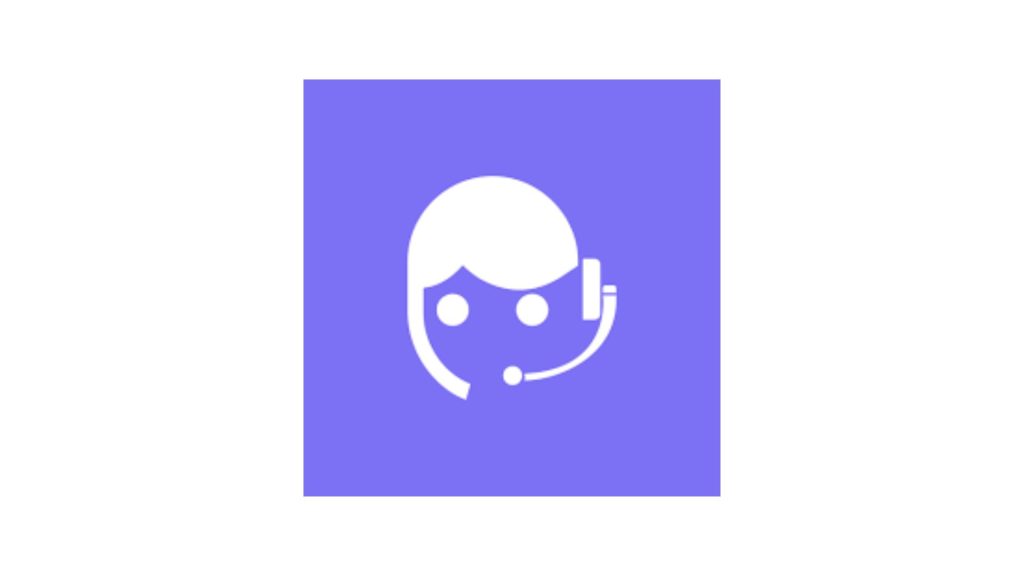
UVdesk is specialized help desk software best suited for eCommerce, marketplaces, and multichannel-oriented businesses. It is a SaaS and an open-source solution.
Key Features
- Tickets: Simplify ticket formation, administration, and management using categorization, captcha, email piping, bolting, and more.
- Workflows: Customize ticketing workflows for assignments, conditions, events, etc. Set up tailored processes for ticket management for better efficiency.
- Multichannel Support: Manage tickets from multiple channels, such as the website, mailbox, Binaka, Amazon Seller Central, and more.
- Integrations: Simplify queries from your merchant channels with dedicated integrations to eBay, Amazon, Etsy, Flipkart, and more.
10. Spiceworks Cloud Help Desk
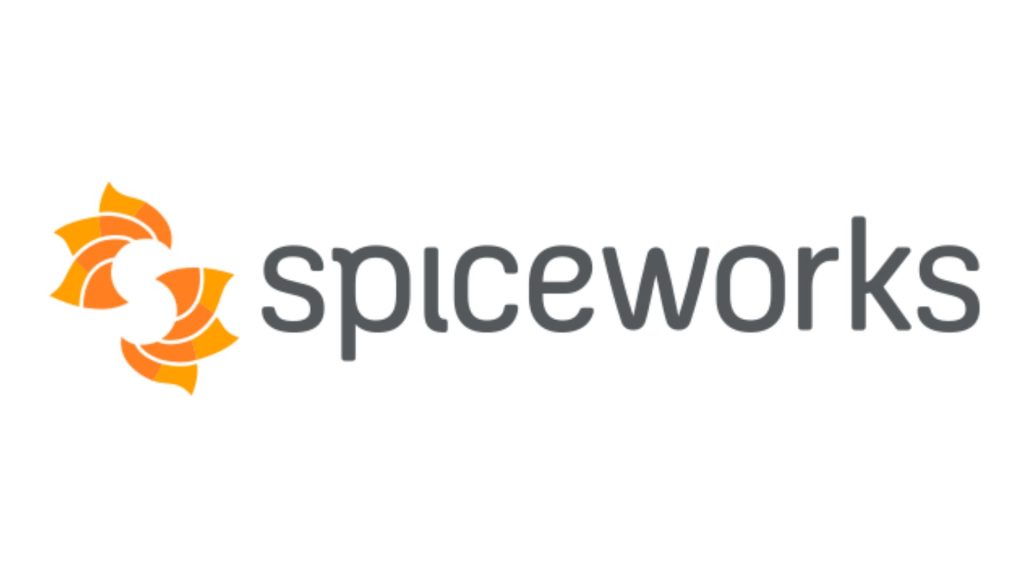
Spiceworks Cloud Help Desk is an excellent solution for companies that want to set their ticket prioritizations right and generate more time for agents to work productively. It is a cloud-based solution and is available for free.
Key Features
- Ticket Management: Spiceworks’ native mobile app allows you to track and manage support tickets from anywhere. It supports Android and iOS.
- Automation: Leverage automated responses, custom ticket views, and ticketing rules to effectively work with due dates, ticket assignments, and prompt responses.
- Advanced Reporting: Add filters and combinations to generate tailored service reports. Work with custom ticketing chronology. Use the Custom Power BI Desktop Data to pull data directly from the Cloud Help Desk account for analytics and insights.
11. Hesk
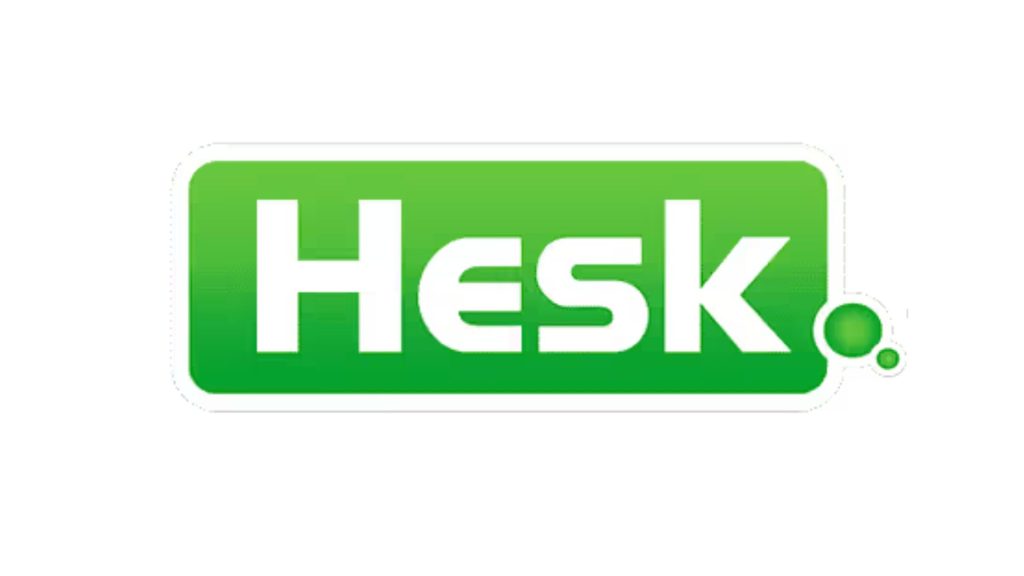
HESK is a unique help desk solution that allows you to set up a web-based customer portal in PHP. It best suits businesses that want straightforward help centers without bells and whistles.
Key Features
- Generative AI: Use AI-powered conversational chatbot to resolve queries for customers day in and day out. Embed it in chat, email, Teams, or self-service portals.
- Workflow Automation: Leverage SysAid to streamline ticketing and assignment processes across your service workflows. Orchestrate and tailor your workflows as needed for better efficiency.
- Asset Management: Use your service desk to view and manage your assets securely. The interface puts asset data directly inside each ticket for better context.
12. Keeping
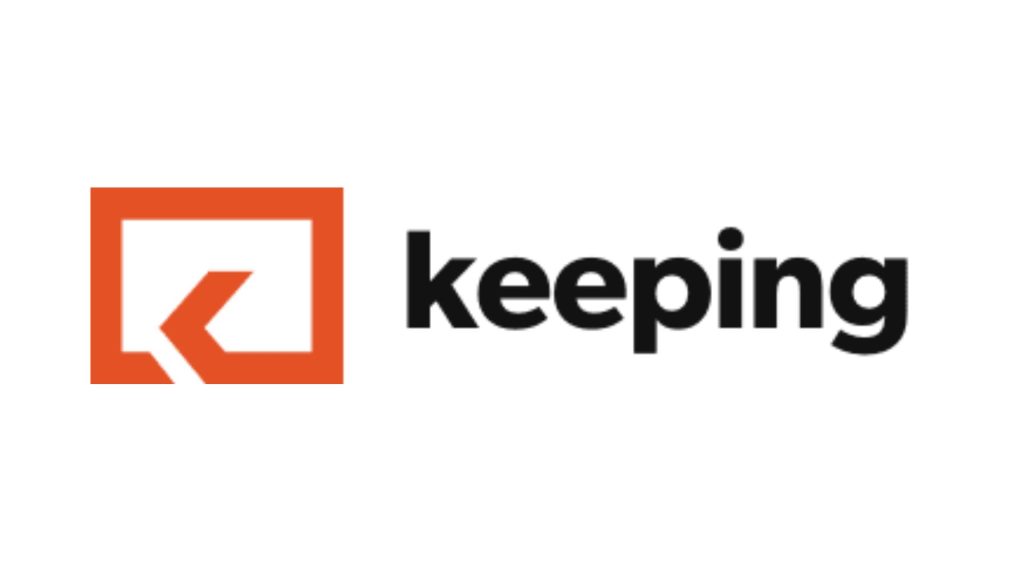
Keeping a help desk is best suited for businesses that use Gmail as the base of service operations. It helps you set up a shared inbox within Gmail and manage service from there.
Key Features
- Gmail Collaboration: Shared notes in Gmail facilitate agent collaboration. The collision detection feature helps eliminate duplication. Tickets can be assigned, prioritized, and tracked easily from within Gmail.
- Analytics: Get reports using tags, mailbox, or agent categories to see each parameter’s performance. Visualize data chronologically to analyze strategies and performance comparatively.
- Automation: Facilitate higher team efficiency using automation for responses.
13. HappyFox
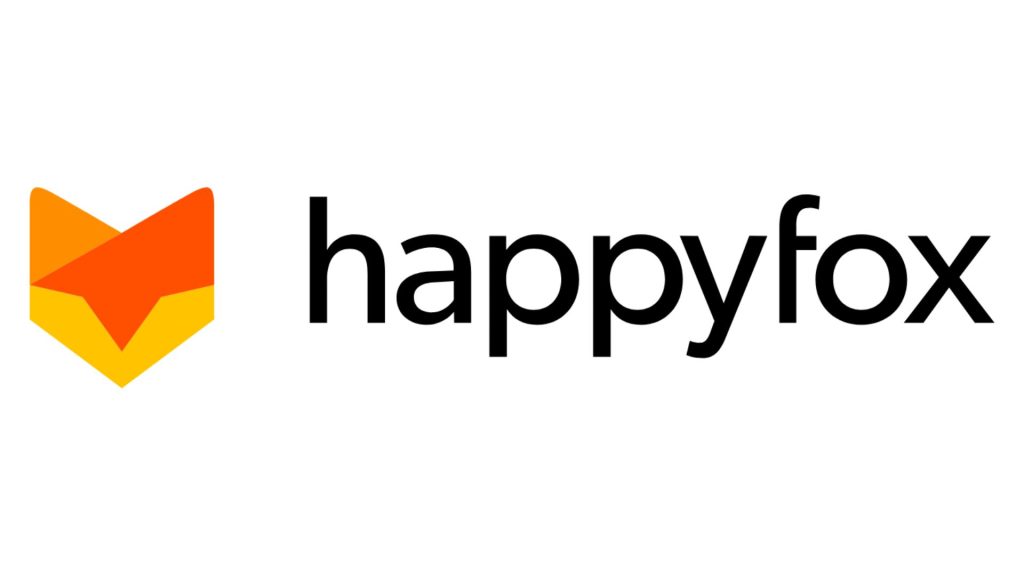
Happyfox is an advanced help desk that optimizes service workflows. Use it to facilitate an easy ticket management system and knowledge base.
Key Features
- Ticketing: Use ticket rules to manage queues, categorize tickets using automation rules and tags, and leverage omnichannel ticketing to manage customer conversations everywhere.
- Asset Management: Track your hardware and software service assets in a single place. Make it easier to import and export customer information across holdings in a single click.
- Canned Actions: Making tasking for agents easier by combining frequent responses and actions. It helps save agents’ time and provides quick responses.
Help Desk Software: A Business Essential
According to a Springworks report, 69.2% of the service teams are concerned that repetitive jobs in the service department reduce productivity and negatively impact revenues.
Help desks are essential not only at the business end of things but also at the customer end. Using help desk software, your enterprise can:
1. Improve Customer Satisfaction
The end goal of help desk software is to give users a good service experience. It provides customers with self-service options to navigate their queries easily.
Besides, help desk software offers customers multiple ways to contact your brand and a quick connection to the most relevant service agents to resolve any issue.
It facilitates a knowledge base and portal from which customers can easily find what they seek. Moreover, it enhances customer satisfaction by making service simpler and more accessible.
2. Empower Agents
Help desk solutions empower your representatives to use automation to simplify their workflows and enhance the efficiency of their tasks.
For example, agents can automate thank-you messages or follow-up emails to improve the quality of the service they provide. They can also automate ticket tagging and classification using custom tags that help them organize their work better.
3. Consolidate Interactions
Help desk software with multichannel support can handle incoming requests from various channels. It consolidates the interactions from multiple channels into a single database so that various teams working on a ticket can use the same source of truth for their operations.
Help desk streamlines the resolution process and ensures no duplicates in the system.
4. Reduce Agent Workload
Help desk software helps reduce agent workload by providing automated workflows, self-service modules, and intelligent conversation routing. Every agent receives tickets that are within their skill level to resolve.
In rare situations where escalation is requested, automated workflows escalate the ticket according to programmed protocol, allowing agents to focus on resolving issues without manual intervention.
Never Miss a Service Request with Kapture
An all-in-one capability while making the benefits more tangible for potential users. Additionally, avoid repetitive language like “more value” and “much more,” which could be replaced with specific examples of how Kapture enhances operations.
Good customer service is not something that you can implement once and achieve overnight. It is a well-rounded, perpetual exercise you must train your agents to bring into habit.
Think one step beyond help desks. Consider customer experience tools such as Kapture CX that equip you with all-in-one solutions, connecting customer service and experience for holistic service coverage.
Kapture CX provides AI-powered self-service modules that empower customers to search your knowledge base using natural language keywords. Kapture’s Agent Assist feature equips your agents with AI-powered suggestions and prompts to help them deliver exceptional service.
Furthermore, you can utilize real-time conversation intelligence to measure customer sentiment and agent performance to inform strategies.
Use Kapture CX to set up self-service chatbots, advanced ticketing, omnichannel service experiences, feedback management, advanced analytics, and much more to improve the outcomes of your contact center.
Visit Kapture CX today to learn more.
FAQs
Yes, a help desk is a reactive solution, whereas a service desk is a proactive solution. A help desk functions only after a ticket is received in the system.
In help desk software, you can automate the ticketing process and customize categorization. You can also set up custom ticket flows based on priority labels, departments, or ticket types.
Agents can utilize the help desk to set up trigger-based emails (like thank you messages or follow-ups) and use it to navigate through company resources to provide better service to customers.
Help desk is one aspect of customer experience that handles incoming queries and makes it easier for customers to find answers effectively. It thus helps improve customer experience.
